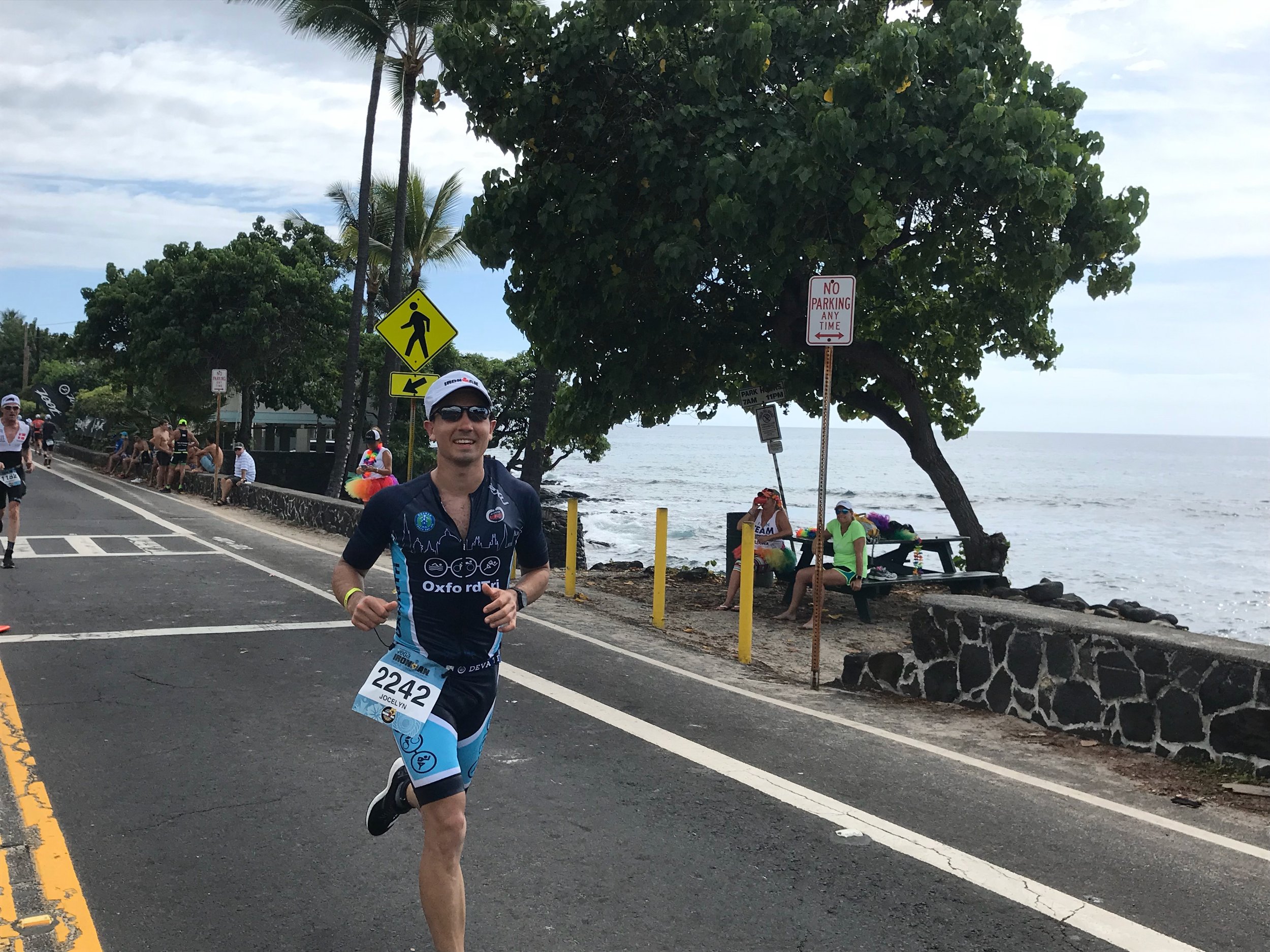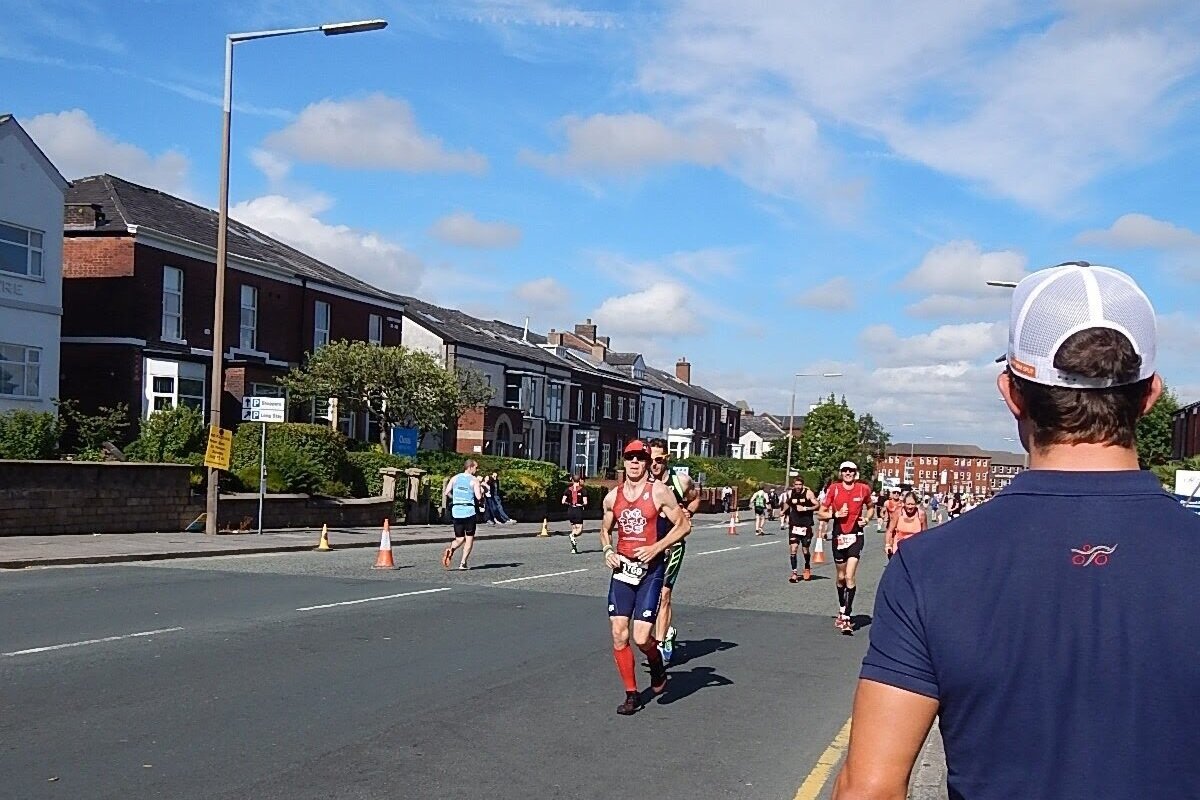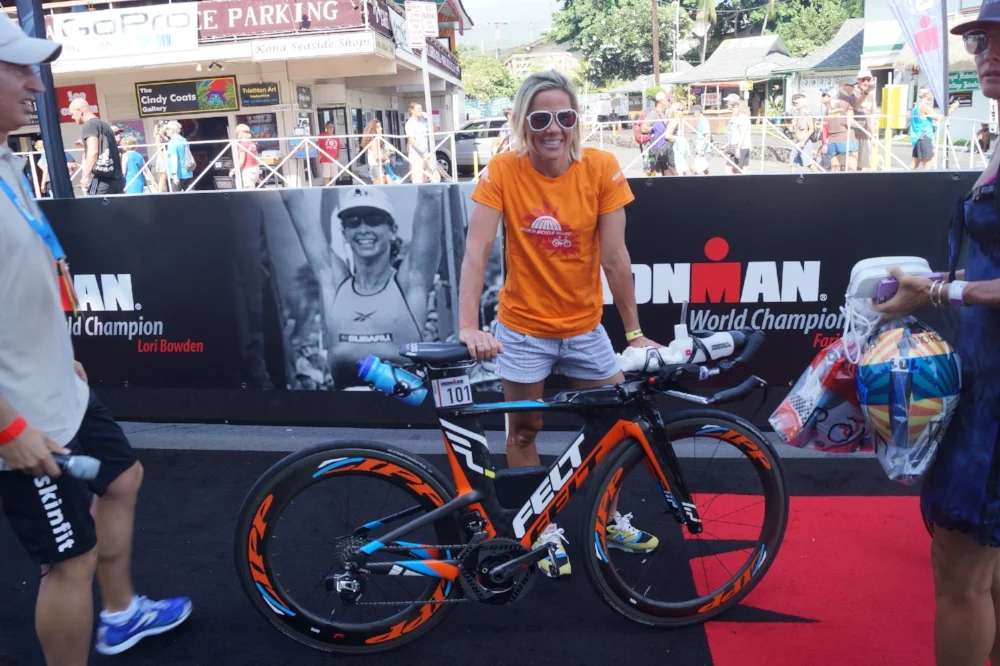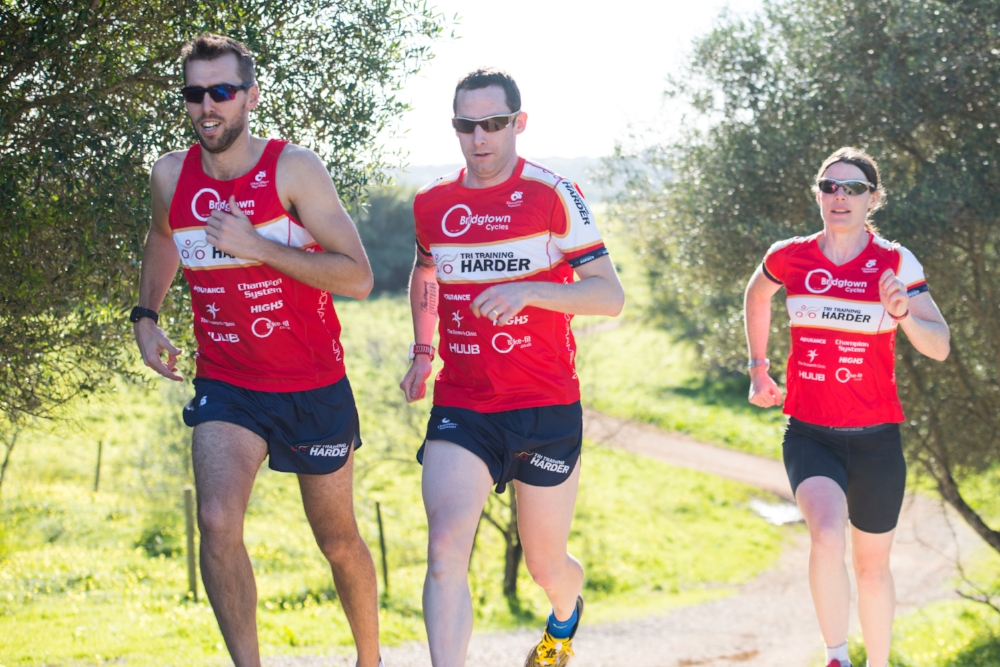For this page, we have tried to collate all the information we have on training for your first IRONMAN-distance race as well as bring together articles and resources that are useful for you to read through before you start your event. We also have put together some common questions that athletes ask about training to help you on your way.
Given the specifics of IRONMAN training and the need to condense training around a busy life schedule, work out your best nutrition strategy and all the information out there, it may be worth speaking to one of our coaches in one of our Coach Consultations or browsing our training plans to streamline your information
IRONMAN First Timer Articles
Podcasts that can help IRONMAN First Timers
Common Questions and Answers to help IRONMAN First timers
-
If you haven’t already read this article, then we suggest you start reading this article for all the things you should consider before signing up.
It is full of loads of great tips and suggestions.
-
No! There is great crossover in fitness for running from cycling and other triathlon information. This article talks about why you need to limit running where possible.
-
IRONMAN triathlons do need some specific equipment choices. For example, many first-time triathlons will allow you to ride any bike. In IRONMAN races, it must be a road or triathlon (TT) bike. Most races will take place int he open water environment, and that will mean you will need a wetsuit. It is best to choose a triathlon swimming wetsuit. Your old surfing one will be very stiff in the shoulders and less comfortable or effective for swimming.
Other than that, don’t go spending loads of money on kit. Make sure you have good shoes to run in and equipment to be able to get outdoors in most conditions. That will be a better investment than anything too fancy!
-
Training can be really varied. Our IRONMAN training plan is suitable for the general athlete looking to improve, having raced some shorter races before.
For your first race, the aim is to make sure you can swim the distance the cut-off, ride the bike before the cut-off and not get injured in the lead-up to the race!
Importantly, the sports work together to build fitness. Therefore, you don’t need to do a full marathon in training. For many people, focussing on the swim to get under the cut-off and bike miles will help them get round effectively. Minimal running (which has the highest risk of injury) will be the lowest volume.
-
An IRONMAN triathlon consists of:
Swim – 3.8km
Bike – 180km
Run – 42.2km (a marathon)
and on the original entry sheets, the entry stated then that you could “brag for the rest of your life!”
-
IRONMAN races usually have a cut-off of 17 hours (a cumulative 10:30 to get to the end of the bike and 2:20 to finish the swim). Therefore, the final finisher will be under 17 hours. In some “faster” races, the cut-off may be less than 17 hours.
Professional male athletes regularly break 8 hours, with the fastest times under 7:30. The fastest female athletes break 8:30.
Most age-groupers will consider breaking 10 hours as a big milestone, and 13-15 hours would be average for most courses.
-
For an IRONMAN, the kit required for it is similar to any other triathlon.
– Road Bike
– Helmet
– Running shoes
Other equipments that will help you with your race are:
– Goggles
– Wetsuit
– Tri suit (a garment you can wear all through the race from start to finish)
– A number belt (you can tie your number to it, and it helps it be worn on the bike and run.)
With IRONMAN racing, it is worth thinking about other additional items that you take with you to make your life more comfortable and you will also need to carry the fuel (food and hydration) to complete the race.
-
Nutrition and fuelling is one of the most important aspects of your IRONMAN race strategy. We have a really helpful nutrition section for general advice.
However, this article takes you through how to create your nutrition strategy for an IRONMAN, and this article is a little more general.
The key concepts to know and format he basis of your nutrition strategy are:
How much you sweat and then how much fluid you need to replace every hour. This will help you understand your fluid needs. This could be between 600ml and 1,500ml per hour, depending on the conditions, your training and how you get on. It is worth testing this, which is easy to do.
How many salts or electrolytes do you need to consume with your fluid loss? This can be estimated, but it is likely to sit between 500mg-1600mg/litre of fluid loss, which is a big range! You can test it formally here. or guestimate using a middle value based on how much salt you think you lose (are your clothes usually covered in salt crystals?
Finally, you can absorb between 60-90g of carbohydrates per hour. So you can look at the lower end of this range and try to consume more with training.
The key part of any nutrition strategy is to test it in training and try and practice it when you find something that works for you.
-
IRONMAN Athletes will experience many challenges in a race, but hopefully, the training has prepared them for it.
Here are some common challenges that athletes will experience:
Getting carried away and pushing too hard at the start of each discipline
Gut issues – GI distress is common in long-course racing. Planning and practising your nutrition strategy is the best way to avoid GI distress. However, if you do get issues on the race, go to the toilet early and ry and go back to simple foods or drinks. Keep your salt and fluid intake up.
Mechanical issues. Most mechanical issues are unfortunate, and it doesn’t often happen. The more you are comfortable with your bike, the easier it will be to overcome this. Be prepared to deal with the chain falling off your bike and repairing a puncture.
Getting tired! It is a long day out. No matter how well-trained you are, there will be a point when you have a dip – eat something and push through; you will find it will get better!
Failing to plan the final week properly and end up racing around a lot and doing too much! Many people end up walking too much around the race venue and start with tired legs.
Most of your challenges will actually be in scheduling training before the race and balancing it all in. This is where a coach can be invaluable.
-
Most of the rules in an IRONMAN are the same as a normal Triathlon:
Swim
– You can’t swim backstroke (it looks like you are in distress)
– As long as you make no forward progress, you can hold onto any safety craft.
– You don’t need to swim Front Crawl
Bike
– You must wear a helmet, and it must be done up
– Only some races will specify the type of bike you need to use.
– You will need to wear a number facing backwards.
– You are not allowed to ride with music.
– You must obey normal traffic rules.
Run
– You are unlikely to be allowed to run with any music.
– Your number must be visible to the front.
Transitions
– No nudity
– You must do up your helmet (and wear it) before touching your bike and must continue to have your helmet on until after you have put the bike down.
– You should keep your transition area tidy.
– You cannot ride your bike in transition. That means you must push your bike to a mount line before getting on it. And you must get off your bike before you get to the dismount line.
Other rules
– You are responsible for knowing the route (but many races are marshalled and signposted
– No littering
– You must use designated toilets.
The big difference for IRONMAN racing is that there are bags to put all your transition equipment and next discipline gear into. This can be a little confusing at your first race, but basically, you put all the things you need into a bag, collect the bag, get change and then go onto your next discipline. (e.g. pick up your bike). You won’t be allowed to leave stuff at your bike transition and your bags will be provided.
-
Starting off too hard in an IRONMAN is really common. To make a generalisation, we suggest you. Just race at an easy pace.
A useful mantra is to know how much of the discipline is left and pace yourself so you can go faster int he second half of whatever remains.
Through training, you should be able to learn or gauge your effort. This, and using the data to help you guide how fast you should go. Trust that! The race really begins in the final 20km of the run, not before!
-
Transitions for an IRONMAN often differ from normal triathlon races as you have to use transition bags.
The race organiser provides these bags and should have all your gear in for the next discipline.
You can leave equipment on your bike (e.g. bike shoes), but otherwise, you will not be allowed equipment at your bike.
You will need to collect your bag and then move to the changing area; these often have a seating area and a changing tent if you want to change your clothing totally.
You will then leave your bag and move onto the next discipline. You can collect all your bags at the end of the race. Sometimes they are even placed with your bike.
-
Preparation and planning define a successful IRONMAN attempt. The more you prepare and practice the areas of the race, the easier it will be to execute your race plan.
Planning your IRONMAN race will be the next important step. Often people forget about the need to plan the final week of training, and everything becomes a rush. Take that final week easy, and you will be fine.
If you are unsure, then speak to a coach! They will help you prepare the race's final few moments and assemble the race strategy.























